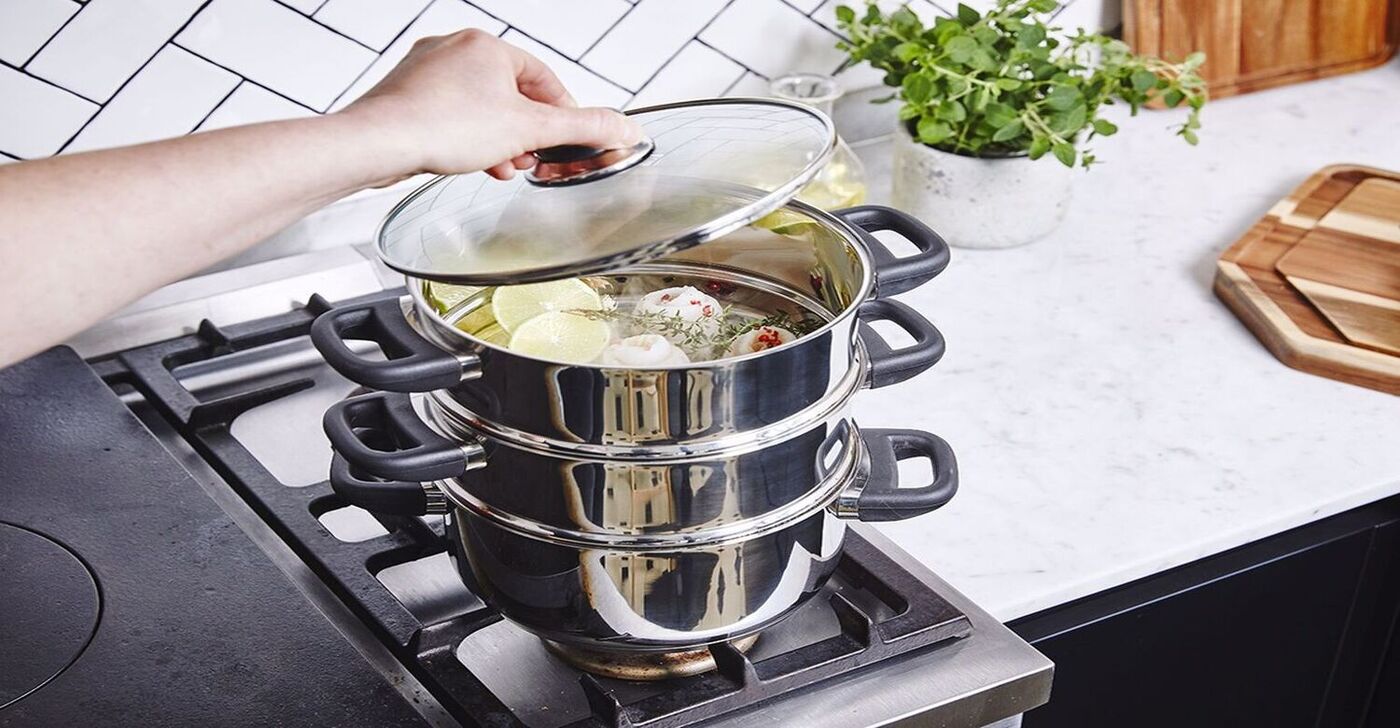

Articles
What To Cook In A Steamer
Modified: August 25, 2024
Discover a variety of articles on what to cook in a steamer, from delicious seafood to healthy vegetables. Browse our collection for steaming inspiration.
(Many of the links in this article redirect to a specific reviewed product. Your purchase of these products through affiliate links helps to generate commission for Storables.com, at no extra cost. Learn more)
Introduction
Welcome to the wonderful world of steaming! Whether you’re a seasoned chef or a beginner in the kitchen, using a steamer can open up a whole new realm of culinary possibilities. Steaming is not only a healthy cooking method that preserves the natural flavors and nutrients of your food, but it also offers a variety of delicious options to explore.
In this article, we’ll dive into the benefits of steaming, explore different types of steamers, and discover a range of dishes that you can easily prepare using this versatile cooking technique.
Steaming has gained popularity over the years due to its numerous health benefits. Unlike frying or sautéing, which often require oils and fats, steaming allows you to cook your food using just water or broth. This means that you can enjoy flavorful and nutrient-rich meals without adding unnecessary calories or unhealthy fats.
Steaming is particularly beneficial for those looking to improve their heart health. By using a steamer, you can reduce the consumption of saturated fats and cholesterol commonly associated with other cooking methods. Additionally, steaming helps preserve the vitamins and minerals found in your food, ensuring that you get the maximum nutritional value from what you eat.
Another advantage of steaming is that it retains the natural textures and colors of your ingredients. Unlike boiling, which can often leave vegetables limp and soggy, steamed vegetables maintain their crunchiness and vibrant colors. Similarly, seafood and poultry cooked in a steamer remain juicy and tender, preserving their natural flavors.
Now that we understand the benefits of steaming, let’s explore the basics of steamers. There are various types of steamers available on the market, each with its own unique features and advantages. The most common types include stovetop steamers, electric steamers, and bamboo steamers.
Stovetop steamers are versatile and can be used on any type of stovetop, including gas, electric, and induction. Electric steamers are convenient and easy to use, with adjustable settings that allow precise control over the cooking process. Bamboo steamers are traditional and add a unique flavor to the food thanks to their natural materials.
Once you have chosen the right steamer for your needs, it’s time to get cooking! Steaming is incredibly versatile and can be used to prepare a wide range of dishes. Let’s explore some popular options that you can try using your steamer:
Key Takeaways:
- Steaming offers a healthy, versatile, and flavorful cooking method that preserves nutrients, enhances food flavors, and provides quick, convenient, and safe cooking options for a wide range of dishes.
- By understanding the basics of steamers, experimenting with different ingredients, and following practical tips, anyone can become a master of the steamer, creating delectable and nutritious meals with ease.
Read more: What Is The Best Food Steamer
Benefits of Steaming
Steaming is a cooking method that offers numerous benefits for both your health and your taste buds. Here are some of the key advantages of steaming:
- Preserves Nutrients: Steaming is a gentle cooking method that helps retain the natural vitamins, minerals, and antioxidants present in food. Unlike boiling or frying, which can leach out nutrients, steaming ensures that your meals are packed with essential goodness.
- Enhances Food Flavor: Steaming allows the natural flavors of ingredients to shine. By cooking food without submerging it in water or adding excessive fats, steaming preserves the true essence of the food, resulting in dishes that taste fresh and delicious.
- Low in Fat and Calories: One of the most significant benefits of steaming is that it requires little to no added fats or oils. This makes it an excellent choice for those aiming to reduce their calorie or fat intake without compromising on taste or texture.
- Retains Texture and Color: When you steam vegetables, they maintain their crispness, vibrant color, and natural textures. This means you can enjoy perfectly cooked veggies without them becoming mushy or losing their visual appeal.
- Quick and Convenient Cooking: Steaming is a fast and efficient cooking method. With a steamer, you can whip up a nutritious meal in minutes, making it an ideal option for busy individuals or those who want a hassle-free cooking experience.
- Reduces Risk of Overcooking: Steaming provides better control over the cooking process, reducing the risk of overcooking. Since the food is cooked using gentle, circulating steam, it is less likely to become dry, tough, or overdone.
- Safe and Easy to Use: Steaming is a safe cooking method that eliminates the risk of burnt food or hot oil splatters. Whether you’re using a stovetop steamer, electric steamer, or bamboo steamer, the process is straightforward and requires minimal supervision.
- Versatile Cooking Options: Steaming isn’t limited to vegetables alone. You can steam a variety of foods, including seafood, poultry, dumplings, rice, grains, and even desserts. This versatility allows you to experiment with different flavors and cuisines.
With all these benefits, it’s no wonder that steaming has become a popular cooking technique among health-conscious individuals and culinary enthusiasts alike. So, get ready to steam your way to flavorful and nutritious meals!
Steamer Basics
Before you start cooking with a steamer, it’s essential to understand the basics of how it works and the different types of steamers available. Here’s what you need to know:
How a Steamer Works: A steamer is a cooking appliance that utilizes steam to cook food. It consists of a pot or a base that holds the water, a rack or basket where the food sits, and a lid that traps the steam inside. As the water boils, the steam rises and surrounds the food, gently cooking it to perfection.
Types of Steamers: There are several types of steamers you can choose from, depending on your preference and cooking needs:
- Stovetop Steamer: This type of steamer is designed to be used on the stovetop. It typically consists of a large pot with a perforated insert or basket that holds the food. Stovetop steamers are versatile and can be used on various stovetop types, including gas, electric, and induction.
- Electric Steamer: Electric steamers are stand-alone appliances that come with multiple tiers or compartments for steaming different foods simultaneously. They often have adjustable settings to control cooking time and temperature. Electric steamers are convenient and require minimal supervision.
- Bamboo Steamer: Bamboo steamers are traditional steamers commonly used in Asian cuisine. They are made of woven bamboo and consist of multiple layers or baskets stacked on top of each other. Bamboo steamers add a unique flavor to the food and are perfect for steaming dumplings, buns, and vegetables.
Preparing the Steamer: Before using your steamer, make sure to clean it thoroughly and remove any dust or debris. If you’re using a stovetop steamer or electric steamer, fill the pot or base with water, leaving enough space for steam to circulate. For bamboo steamers, line each basket with parchment paper or cabbage leaves to prevent sticking.
Placing the Food: Arrange the food evenly on the steaming rack or basket, making sure not to overcrowd it. This allows the steam to circulate freely and ensures that each piece cooks evenly. If you’re using a multi-tiered steamer, place foods with longer cooking times on the bottom and more delicate items on the top.
Steaming Time: The cooking time will vary depending on the type of food and the steamer you’re using. As a general guide, vegetables usually cook within 5 to 10 minutes, while seafood and poultry may take 15 to 20 minutes. It’s recommended to check for doneness by inserting a fork or a thermometer to ensure that the food is fully cooked.
Steaming Tips: Here are a few additional tips to make your steaming experience even better:
- Season your food with herbs, spices, or marinades before steaming to enhance the flavors.
- Add aromatic ingredients like ginger, garlic, or lemongrass to the water for an extra touch of fragrance.
- Avoid opening the steamer lid frequently during cooking to prevent the steam from escaping.
- Allow the steamed food to rest for a few minutes before serving to ensure maximum tenderness and flavor.
Understanding these steamer basics will help you get started on your steaming culinary adventures. So, grab your steamer and let’s explore the delicious world of steam-cooked dishes!
Vegetables
Steaming vegetables is a fantastic way to preserve their vibrant colors, crisp textures, and nutritional value. Here are some popular vegetables that are perfect for steaming:
- Broccoli: Steaming broccoli helps retain its bright green color and crispness. Simply trim the florets into bite-sized pieces, place them in the steamer basket, and steam for about 5-7 minutes until tender-crisp. Serve with a sprinkle of salt, a drizzle of olive oil, or a squeeze of lemon for added flavor.
- Carrots: Steamed carrots are tender and sweet, making them a versatile side dish or addition to salads. Peel and slice the carrots into thin rounds or sticks, place them in the steamer, and steam for about 8-10 minutes until they are easily pierced with a fork. Toss with a bit of butter and honey for a delightful glaze.
- Cauliflower: Steamed cauliflower is a nutritious and delicious option that can be enjoyed on its own or used in various recipes. Cut the cauliflower into florets, steam for about 6-8 minutes until tender, and season with salt, pepper, and a sprinkle of grated Parmesan cheese or a squeeze of lemon juice.
- Green Beans: Steaming green beans helps maintain their vibrant color and crisp texture. Top and tail the beans, place them in the steamer basket, and steam for around 5-7 minutes until they are bright green and tender. Toss with a little olive oil, minced garlic, and a pinch of red pepper flakes for a flavorful side dish.
- Asparagus: Steamed asparagus spears are tender, yet still have a slight crunch. Trim the tough ends of the asparagus, place them in the steamer basket, and steam for about 4-6 minutes until they are bright green and easily pierced with a fork. Drizzle with melted butter or a tangy vinaigrette for a delicious accompaniment to any meal.
Remember, the cooking times provided are just guidelines, and you can adjust them based on your preferred level of doneness. Be sure to experiment with different vegetables and seasonings to create your own unique steamed vegetable combinations.
Steamed vegetables not only make for a nutritious side dish, but they can also be incorporated into other recipes. You can add steamed vegetables to stir-fries, pasta dishes, omelets, or quiches for an extra dose of freshness and color.
Steamed vegetables are not only delicious and healthy but also incredibly versatile. So, the next time you’re looking for a nutritious and easy-to-prepare accompaniment to your meal, give steamed vegetables a try!
Seafood
Steaming seafood is a fantastic way to lock in its natural flavors and delicate textures. Whether you’re a fan of fish, shrimp, or shellfish, steaming can bring out the best in these ocean treasures. Here are some popular seafood options that are perfect for steaming:
- Salmon: Steamed salmon is tender, moist, and full of flavor. Place the salmon fillets on a heatproof dish or a piece of lightly greased foil, season with salt, pepper, and your favorite herbs or spices, and steam for about 10-12 minutes until the fish is opaque and flakes easily with a fork. Serve with a squeeze of lemon or a tangy dill sauce.
- Shrimp: Steamed shrimp is succulent and perfectly cooked. Whether you’re using fresh or frozen shrimp, arrange them in a single layer in the steamer basket, season with salt, pepper, and a sprinkle of Old Bay seasoning for a classic touch, and steam for about 5-7 minutes until the shrimp turn pink and firm. Enjoy them on their own, toss them in a salad, or use them in stir-fries or pasta dishes.
- Mussels: Steamed mussels make for an elegant and flavorful appetizer or main course. Rinse the mussels thoroughly, discarding any that are already open, and place them in a steamer basket. Steam for about 8-10 minutes until the shells open up. Discard any mussels that remain closed. Serve with a garlic and white wine broth or a tasty tomato-based sauce.
- Crab Legs: Steamed crab legs are a true seafood delicacy. Gently crack the legs to expose the meat, place them in the steamer basket, and steam for about 5-8 minutes until the meat is heated through. Serve with melted butter, lemon wedges, and a sprinkle of Old Bay seasoning for a classic crab feast experience.
- Scallops: Steamed scallops are tender and buttery. Pat dry the scallops, season with salt, pepper, and a touch of paprika or garlic powder, and place them in a heatproof dish or foil packet. Steam for about 5-7 minutes until they are opaque and just cooked through. Serve on their own, in a pasta dish, or as part of a seafood medley.
When steaming seafood, it’s important not to overcook it, as this can result in a loss of moisture and tenderness. Keep a close eye on the cooking time and test for doneness by checking for opaque flesh and firm texture.
Steamed seafood pairs well with a range of sauces and dips, such as tartar sauce, cocktail sauce, or a zesty aioli. You can also add steamed seafood to salads, pasta dishes, or rice bowls for a delicious and nutritious meal.
Whether it’s a simple weeknight dinner or a special occasion feast, steamed seafood offers a healthy and flavorful option that will impress your taste buds. So, grab your steamer and dive into the delightful world of steamed seafood!
Poultry
Steaming poultry is a fantastic way to cook chicken or turkey while keeping the meat juicy, tender, and flavorful. Whether you prefer boneless cuts or whole birds, steaming poultry ensures even cooking and locks in the natural juices. Here are some popular poultry options that are perfect for steaming:
- Chicken Breasts: Steamed chicken breasts are lean, moist, and versatile. Place the boneless, skinless chicken breasts on a heatproof dish or a piece of foil, season with salt, pepper, and your favorite herbs or spices, and steam for about 12-15 minutes until the chicken is cooked through and reaches an internal temperature of 165°F (74°C). Slice or shred the chicken and use it in salads, wraps, sandwiches, or stir-fries.
- Chicken Thighs: Steamed chicken thighs have rich, succulent meat and tender texture. Arrange the bone-in, skin-on chicken thighs on a heatproof dish or foil, season with salt, pepper, and your preferred seasonings, and steam for about 20-25 minutes until the meat is fully cooked and reaches an internal temperature of 165°F (74°C). Serve with steamed vegetables or rice for a satisfying meal.
- Turkey Breast: Steaming a turkey breast allows for even cooking and tender results. Place the boneless turkey breast on a heatproof dish or foil, season with salt, pepper, and herbs like thyme or rosemary, and steam for about 25-30 minutes per pound until the meat is cooked through, reaching an internal temperature of 165°F (74°C). Let it rest for a few minutes before slicing and serving with your favorite sides.
- Duck: Steaming duck helps render the fat and produces tender meat with a crispy skin. Pat dry the duck breasts or legs, season with salt, pepper, and Chinese five-spice powder, place them in a heatproof dish or foil, and steam for about 30-35 minutes until the meat is fully cooked and the skin is crispy. Serve with steamed vegetables and a flavorful sauce for a delicious meal.
- Cornish Game Hens: Steamed Cornish game hens are small and flavorful, perfect for an individual serving. Season the hens with salt, pepper, and herbs like thyme or sage, place them on a heatproof dish or foil, and steam for about 35-40 minutes until the meat is cooked through and reaches an internal temperature of 165°F (74°C). Serve with roasted vegetables or a grain pilaf for an elegant plate.
When steaming poultry, be sure to check for doneness using a meat thermometer. This will ensure that the poultry is cooked to a safe internal temperature without risking dry or undercooked meat.
Steamed poultry can be enjoyed on its own as the main protein of a meal, or it can be incorporated into various recipes. From salads and wraps to stir-fries and soups, steamed poultry adds a healthy and flavorful touch to a wide range of dishes.
So, whether you’re cooking for a weeknight dinner or entertaining guests, give steamed poultry a try and savor the moist and tender results that this cooking method offers!
When using a steamer, try cooking a variety of foods such as vegetables, fish, dumplings, and even eggs. Steaming helps retain nutrients and natural flavors in the food.
Rice and Grains
Steaming rice and grains is a foolproof method to achieve perfectly cooked, fluffy, and delicious results. Whether you’re cooking white rice, brown rice, quinoa, or other grains, steaming ensures even cooking and preserves their natural textures and flavors. Here are some popular rice and grain options that are perfect for steaming:
- White Rice: Steamed white rice is light, fluffy, and versatile. Rinse the rice thoroughly to remove excess starch, then place it in a heatproof dish with the appropriate amount of water or broth. Cover tightly with a lid or foil and steam for about 15-20 minutes until the rice is tender. Fluff with a fork before serving.
- Brown Rice: Steaming brown rice helps retain its chewy texture and nutty flavor. Rinse the rice to remove debris, then combine it with the appropriate amount of water or broth in a heatproof dish. Cover tightly and steam for about 35-40 minutes until the rice is tender and the grains have slightly split. Let it sit for a few minutes before fluffing and serving.
- Quinoa: Steamed quinoa is light, fluffy, and packed with protein and nutrients. Rinse the quinoa to remove any bitterness, then combine it with water or broth in a heatproof dish. Cover tightly and steam for about 15-20 minutes until the quinoa is tender and the liquid is absorbed. Fluff with a fork and let it sit for a few minutes before serving.
- Couscous: Steamed couscous results in delicate, fluffy grains that make an excellent base for salads, stews, or pilafs. Place the couscous in a heatproof dish, add an equal amount of boiling water or broth, and cover tightly. Let it steam for about 5 minutes, then fluff with a fork, and it’s ready to be added to your favorite recipe.
- Barley: Steamed barley is hearty, chewy, and packed with fiber and nutrients. Rinse the barley and combine it with water or broth in a heatproof dish. Cover tightly and steam for about 30-40 minutes until the barley is tender. Fluff with a fork and let it rest for a few minutes before incorporating it into soups, salads, or grain bowls.
Steamed rice and grains can be enjoyed on their own as a side dish or used as a base for various recipes. From stir-fries and curries to salads and pilafs, steamed rice and grains add a wholesome and delicious component to a wide range of dishes.
Experiment with different seasonings, such as herbs, spices, or broth, to infuse your rice and grains with additional flavors. You can also add vegetables, proteins, and sauces to create complete one-pot meals with steamed rice or grains as the foundation.
So, the next time you’re looking for a simple and foolproof way to cook rice and grains, give steaming a try. Elevate your meals with fluffy, perfectly cooked rice and grains that will delight your taste buds.
Dumplings and Buns
Steaming dumplings and buns is a traditional and popular cooking method that results in soft, moist, and flavorful treats. Whether you enjoy savory dumplings or sweet buns, steaming them provides a delightful texture and preserves their unique fillings. Here are some delicious options for steamed dumplings and buns:
- Pork Dumplings: Steamed pork dumplings, also known as “siu mai” or “shumai,” are a classic dim sum favorite. Fill a dumpling wrapper with a mixture of ground pork, minced vegetables, and seasonings. Arrange the dumplings in a steamer basket and steam for about 10-12 minutes until the filling is cooked through and the wrappers become slightly translucent. Serve with soy sauce or a tangy dipping sauce.
- Steamed Bao Buns: Soft and fluffy steamed bao buns are perfect for creating delicious and customizable sandwiches. Make a dough using flour, yeast, sugar, and water, and let it rise until doubled in size. Shape the dough into small rounds, place them on individual pieces of square parchment paper, and steam for about 10-12 minutes until the buns are puffed and cooked. Fill with your choice of meats, vegetables, and sauces for a delightful meal.
- Custard Buns: Steamed custard buns, also known as “nai wong bao” or “lai wong bao,” are sweet treats filled with a rich, creamy custard. Make a dough using flour, yeast, sugar, and milk, and let it rise until doubled in size. Flatten the dough, add a dollop of custard filling, and seal it tightly before placing it on square pieces of parchment paper. Steam for about 12-15 minutes until the buns are cooked through and the filling is warm and gooey.
- Vegetable Dumplings: Steamed vegetable dumplings are a delicious and nutritious option for those who prefer a meatless filling. Fill dumpling wrappers with a mix of finely chopped vegetables, such as mushrooms, cabbage, carrots, and green onions. Steam the dumplings for about 10-12 minutes until the filling is tender and the wrappers are translucent. Serve with a soy-based dipping sauce or a spicy chili sauce.
- Red Bean Buns: Sweet red bean buns, also known as “anpan,” are a popular Asian treat filled with sweet red bean paste. Make a dough using flour, yeast, sugar, and warm water, and let it rise until doubled in size. Shape portions of the dough into small rounds, flatten them, add a spoonful of red bean paste filling, and seal the edges tightly. Place the buns on square parchment paper and steam for about 12-15 minutes until they are soft and cooked through.
Steamed dumplings and buns can be enjoyed as standalone snacks, appetizers, or part of a larger meal. They often pair well with dipping sauces, such as soy sauce, black vinegar, or a spicy chili oil. Experiment with different fillings, flavors, and shapes to create a variety of steamed dumplings and buns that suit your taste preferences.
Whether savory or sweet, steamed dumplings and buns offer a delicious and satisfying culinary experience. So, get ready to steam these delectable treats and enjoy the flavors and textures that make them a favorite across different cuisines.
Desserts
Steaming desserts is a unique and delightful way to create moist, tender, and flavorful sweet treats. From cakes and puddings to steamed buns and dumplings, there are plenty of options to satisfy your sweet tooth. Here are some delicious dessert ideas that are perfect for steaming:
- Steamed Chocolate Cake: Steamed chocolate cake is rich, decadent, and incredibly moist. Prepare a chocolate cake batter using flour, cocoa powder, sugar, eggs, milk, and butter. Pour the batter into a greased cake pan or individual ramekins and steam for about 30-40 minutes until the cake is set. Serve warm with a dusting of powdered sugar or a scoop of vanilla ice cream.
- Mango Sticky Rice: This popular Thai dessert combines sticky rice with fresh mangoes for a sweet and tropical treat. Soak sticky or glutinous rice for several hours, then steam it until cooked and tender. Serve the steamed rice with sliced ripe mangoes and drizzle with a sweet coconut sauce made from coconut milk, sugar, and a pinch of salt.
- Steamed Custard Pudding: Steamed custard pudding, also known as “flan” or “caramel pudding,” is a silky and creamy dessert. Make a custard mixture using eggs, milk, sugar, and vanilla extract. Pour the mixture into individual ramekins and steam for about 30-40 minutes until the pudding is set. Let it cool and refrigerate before serving. Invert the pudding onto a plate, and the caramel sauce will create a luscious topping.
- Red Bean Paste Cake: This Chinese dessert features layers of steamed cake alternating with sweet red bean paste fillings. Make a simple sponge cake batter using flour, sugar, eggs, and milk. Steam the cake batter in individual layers, alternating them with a generous spread of red bean paste. Steam for about 15-20 minutes until the cake is cooked through. Slice and serve for a delightful combination of textures and flavors.
- Steamed Lemon Pudding: Steamed lemon pudding is a zesty and tangy dessert that’s perfect for citrus lovers. Mix flour, sugar, eggs, lemon zest, and lemon juice to create a smooth batter. Pour the batter into individual ramekins and steam for about 20-25 minutes until the pudding is firm and set. Serve warm with a dusting of powdered sugar or a dollop of whipped cream.
Steamed desserts provide a unique and moist texture that’s different from baked or fried options. They offer a delightful change of pace and are often lighter in texture and flavor. Whether you’re entertaining guests or treating yourself to a special sweet indulgence, steaming desserts can be a fun and delicious experience.
With these delectable steamed dessert ideas, you can satisfy your sweet cravings in a creative and flavorful way. So, get ready to steam your way to mouthwatering desserts that will impress and delight!
Read more: How To Use Microwave Steamer
Tips and Tricks for Steaming
Steaming is a versatile cooking method that allows you to create healthy and flavorful dishes. To ensure the best results, here are some useful tips and tricks that will help you make the most out of your steaming experience:
- Use the Right Amount of Water: When steaming, make sure to use the appropriate amount of water or broth in your steamer. Too little liquid can cause the steamer to overheat and potentially damage your cookware, while too much liquid can make your food soggy.
- Preheat the Steamer: Preheating your steamer for a few minutes before adding the food will help shorten the cooking time and ensure more even results. This is particularly important for stovetop or electric steamers. Preheating also helps to create a better steaming environment from the start.
- Avoid Overcrowding: To promote even cooking, make sure not to overcrowd the steamer basket or tray. Arrange the food in a single layer, leaving enough space between each piece to allow the steam to circulate. Overcrowding can result in uneven cooking and longer cooking times.
- Pay Attention to Cooking Times: Different ingredients and sizes of food will require varying cooking times. It’s important to follow the recommended cooking times as a guideline and adjust accordingly. Always test for doneness using a fork, a thermometer, or visual cues to ensure that your food is fully cooked.
- Season and Flavor Foods Before Steaming: Seasoning your food before steaming can enhance the overall flavor. Add herbs, spices, marinades, or sauces to your ingredients prior to steaming. The steam will infuse the flavors into the food, resulting in a more delicious and flavorful end result.
- Allow for Resting Time: After steaming, let your food rest for a few minutes before serving. This allows the flavors to meld and the textures to settle. Resting also helps retain moisture and ensures a more enjoyable eating experience.
- Experiment with Different Ingredients: Don’t be afraid to get creative with your steamed dishes. Try steaming a variety of ingredients, such as different vegetables, proteins, grains, and even fruits. Explore different flavors, seasonings, and combinations to discover new taste sensations.
- Keep the Lid Closed: Resist the temptation to open the steamer lid frequently while cooking. Opening the lid allows the steam to escape, which can prolong the cooking time and affect the overall results. Trust the process and keep the lid closed as much as possible.
- Clean and Maintain Your Steamer: Regularly clean your steamer to ensure optimal performance. Follow the manufacturer’s instructions for cleaning and maintenance. This will help prolong the lifespan of your steamer and ensure that it continues to provide consistent results.
By following these tips and tricks, you can elevate your steaming skills and create delicious, healthy, and well-cooked meals. Steaming opens up a world of culinary possibilities and allows you to enjoy nutrient-rich and flavorful dishes without sacrificing taste or texture.
So, embrace the art of steaming and let your creativity shine. With practice and these helpful tips, you’ll become a master of the steamer, impressing yourself and others with your delectable steamed creations.
Conclusion
Congratulations! You’ve reached the end of our journey into the world of steaming. Throughout this article, we’ve explored the benefits of steaming, learned about different types of steamers, and discovered a range of dishes that can be easily prepared using this versatile cooking technique.
Steaming is not only a healthy cooking method that preserves the flavors and nutrients of our food, but it also offers a wide array of delicious options. From steamed vegetables that maintain their vibrant colors and crunch to tender and succulent steamed seafood, poultry, and even desserts, there’s something for everyone to enjoy.
By understanding the basics of steamers, such as how they work and the various types available, you can choose the steamer that best suits your needs and preferences. Whether you opt for a stovetop steamer, electric steamer, or traditional bamboo steamer, you’ll be well on your way to creating amazing steamed dishes.
We’ve also explored specific categories of steamed dishes, including vegetables, seafood, poultry, rice and grains, dumplings and buns, and desserts. Each category offers a plethora of tantalizing options that can be customized to your tastes and dietary preferences.
Throughout our exploration, we’ve also shared tips and tricks to help you maximize your steaming experience. From using the right amount of water and preheating your steamer to avoiding overcrowding and paying attention to cooking times, these practical tips will ensure that your steamed dishes turn out perfectly every time.
Remember, steaming is a versatile cooking method that allows you to get creative in the kitchen. Don’t be afraid to experiment with different flavors, seasonings, and ingredients. Let your taste buds guide you as you craft unique and delicious steamed creations.
So, whether you’re looking to add healthier options to your menu, preserve the natural flavors and nutrients of your ingredients, or simply explore new and exciting dishes, steaming is a fantastic choice. Embrace the art of steaming and enjoy the culinary journey that awaits you!
Happy steaming!
Frequently Asked Questions about What To Cook In A Steamer
Was this page helpful?
At Storables.com, we guarantee accurate and reliable information. Our content, validated by Expert Board Contributors, is crafted following stringent Editorial Policies. We're committed to providing you with well-researched, expert-backed insights for all your informational needs.
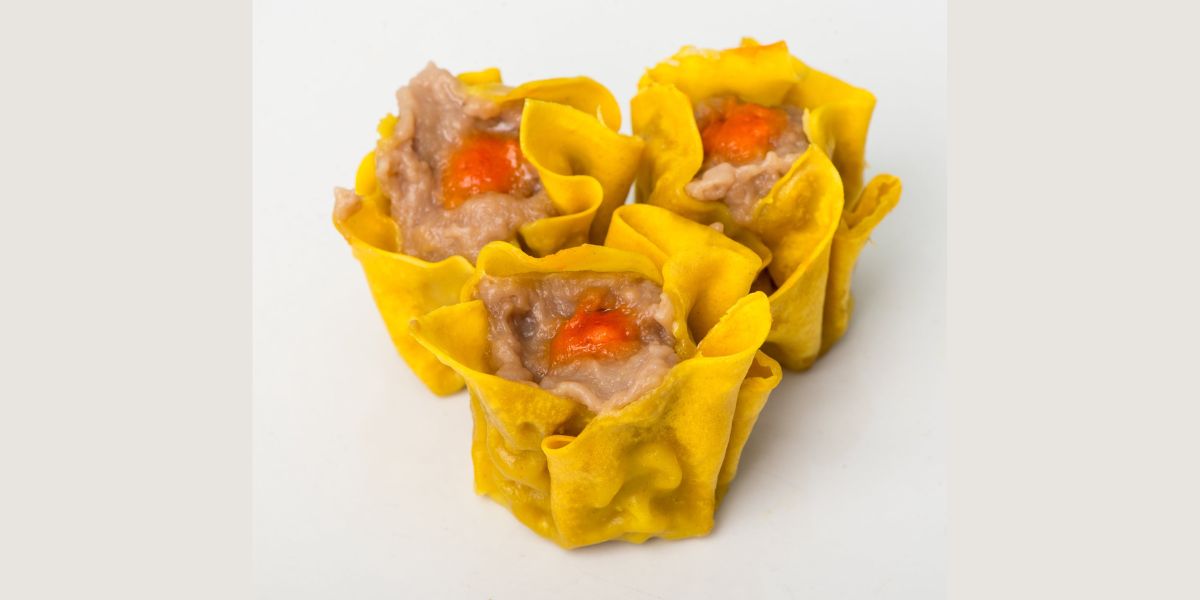
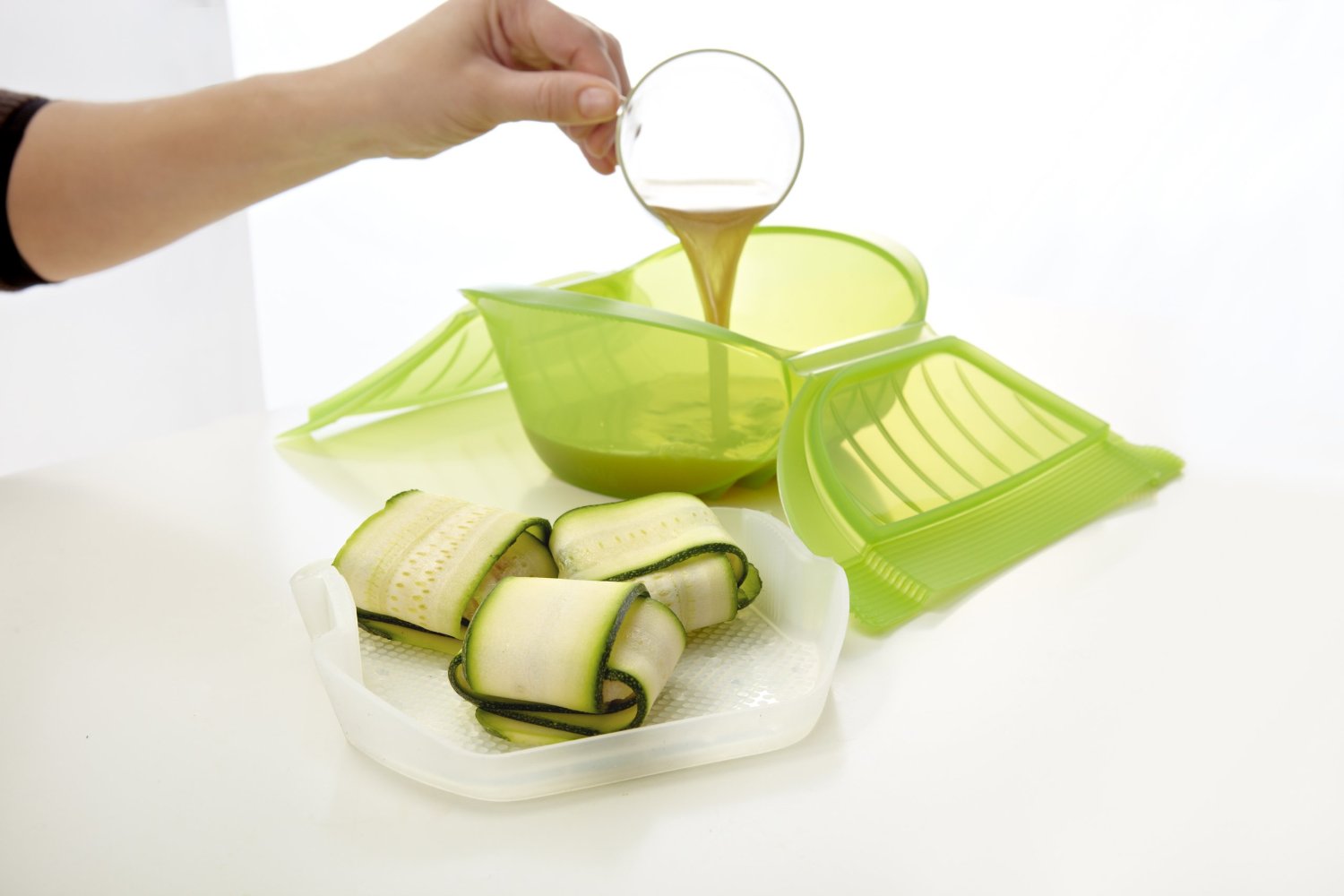
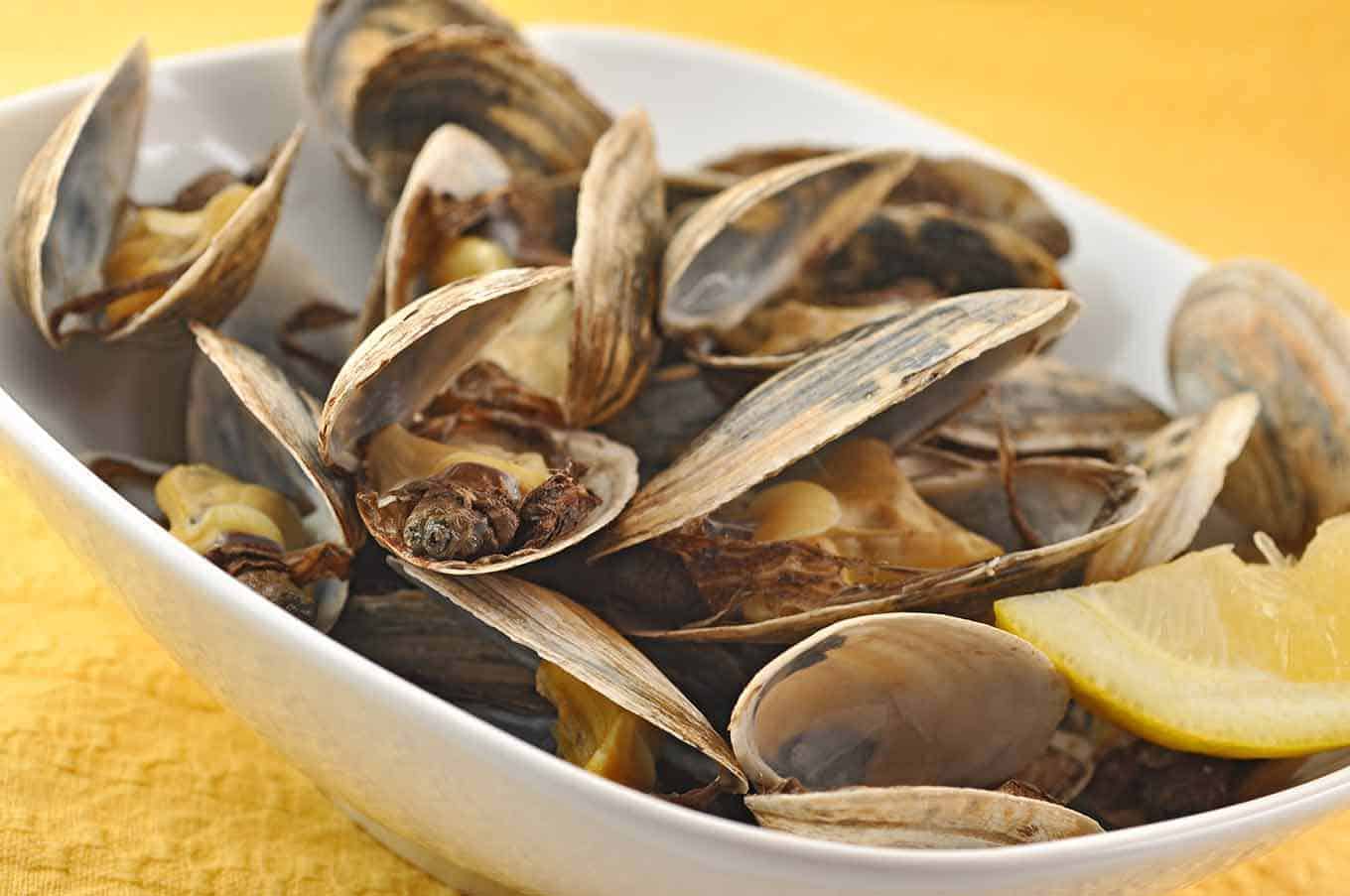
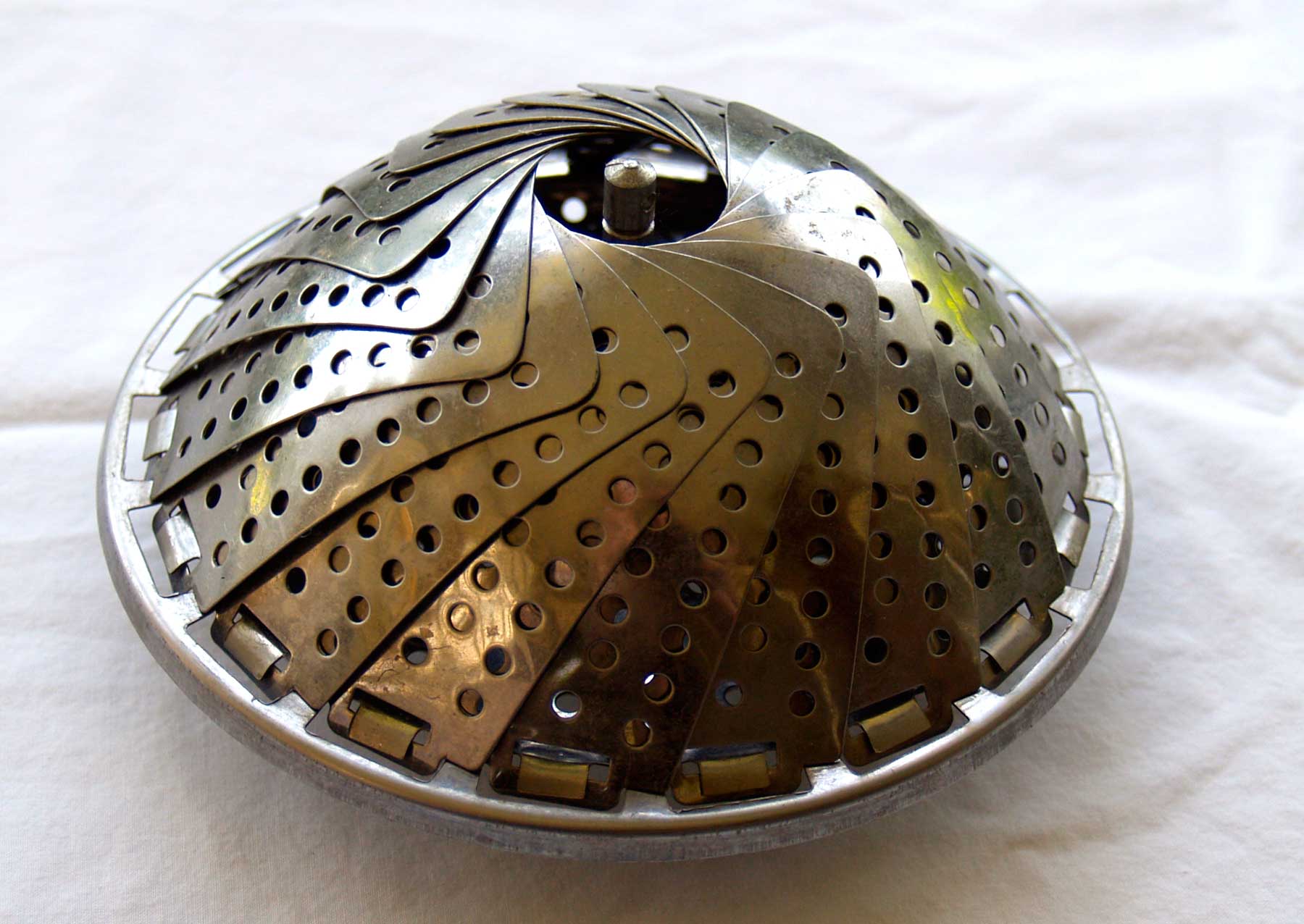


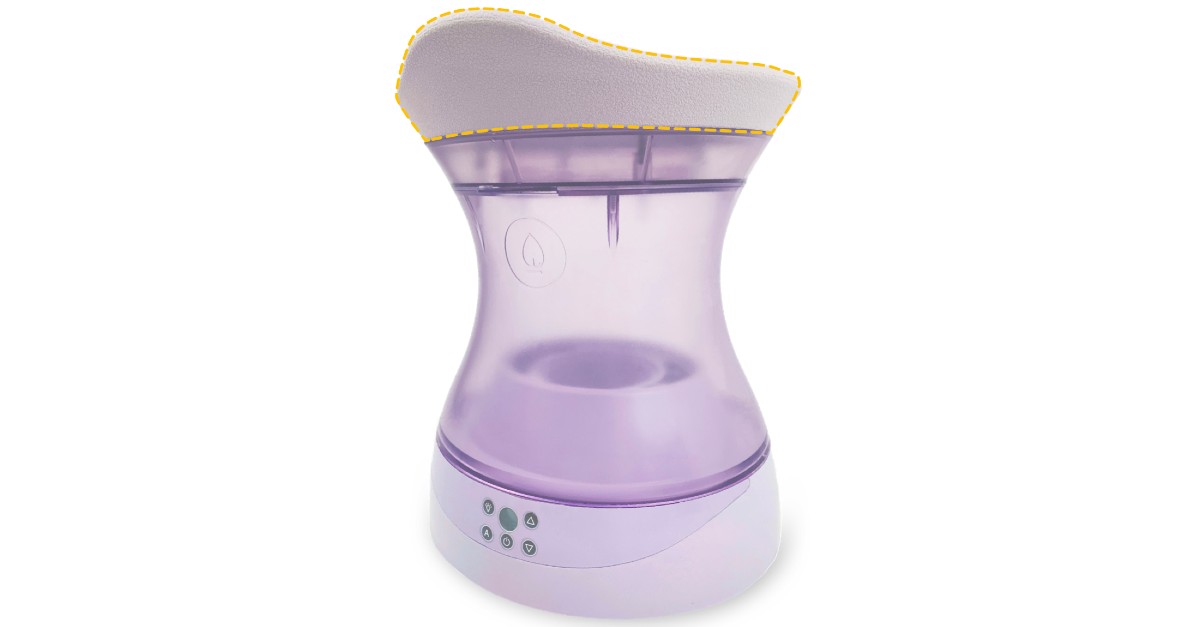

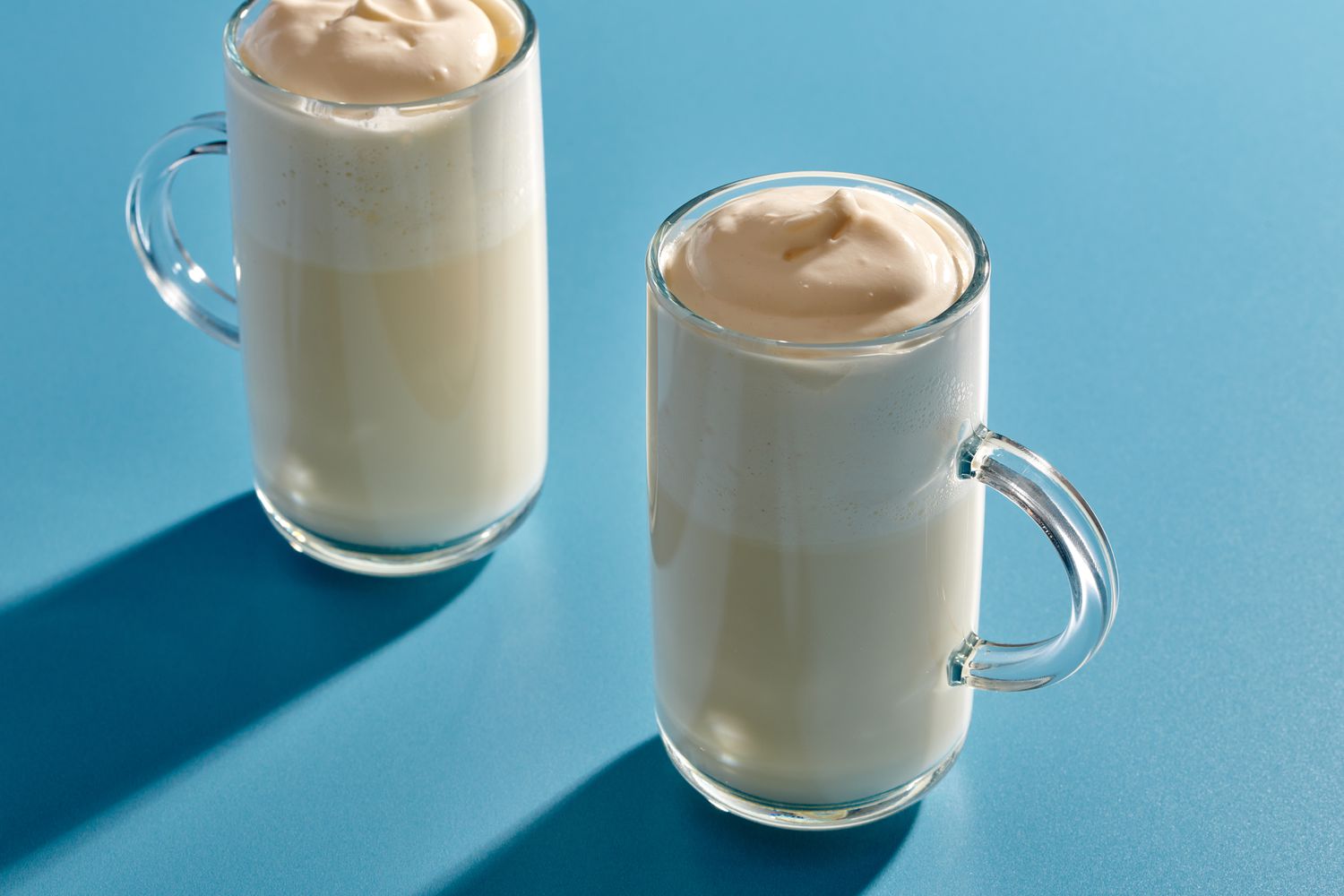
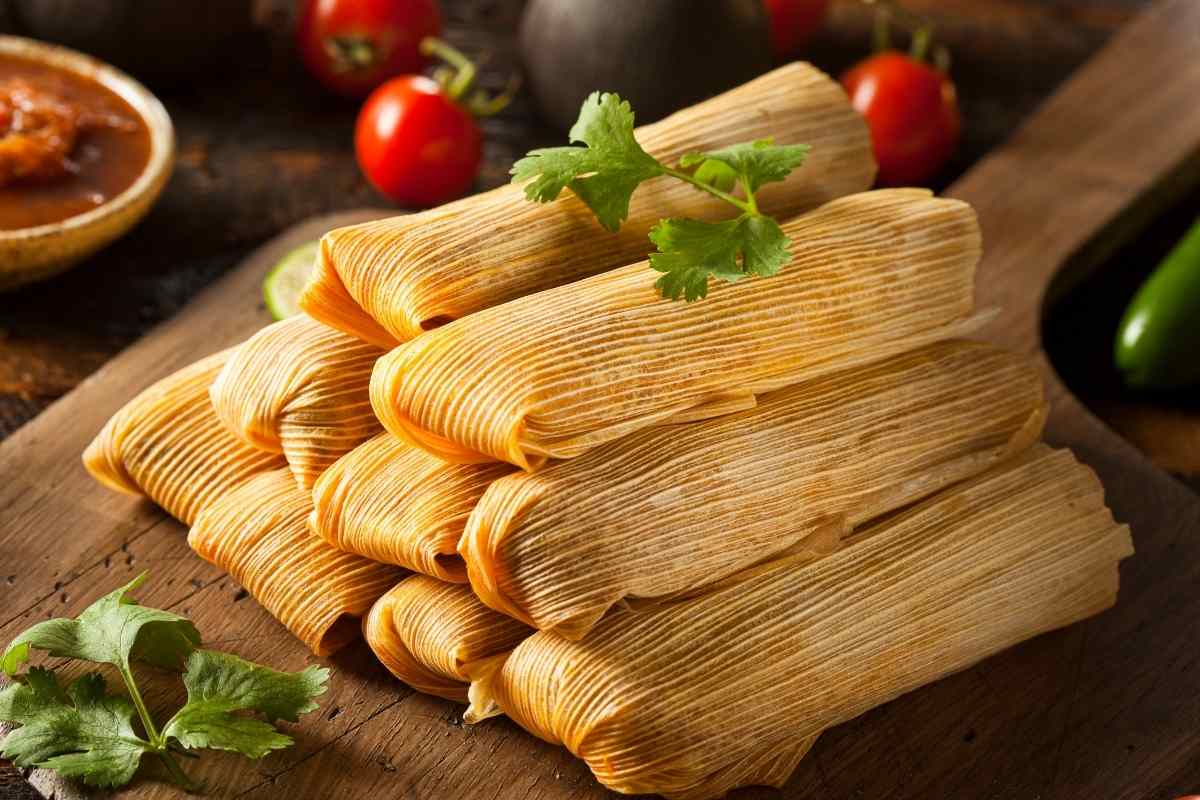
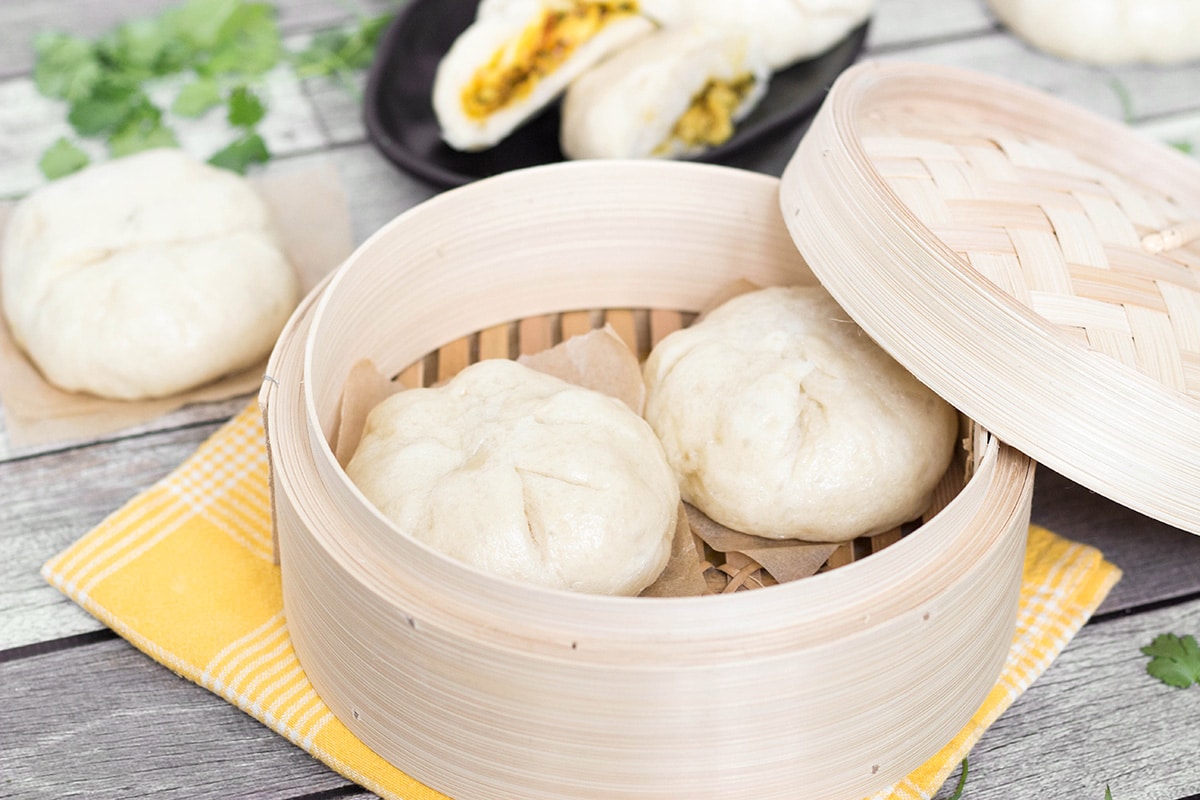
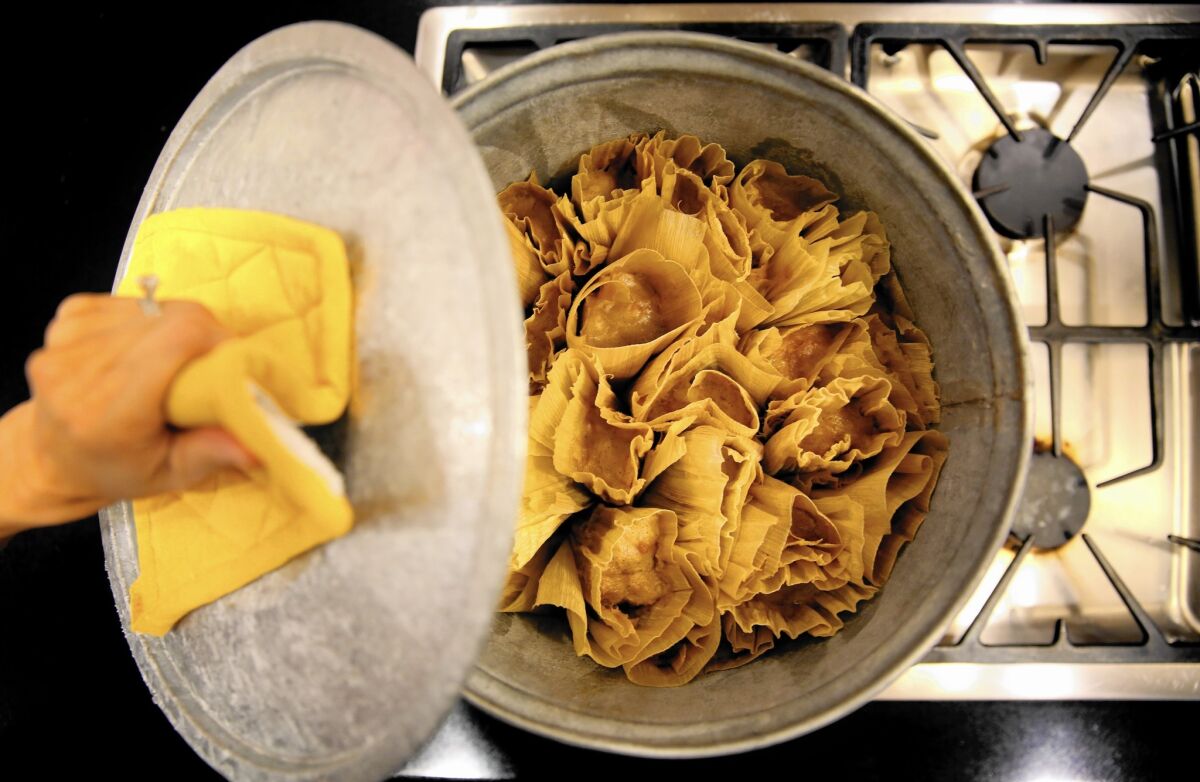
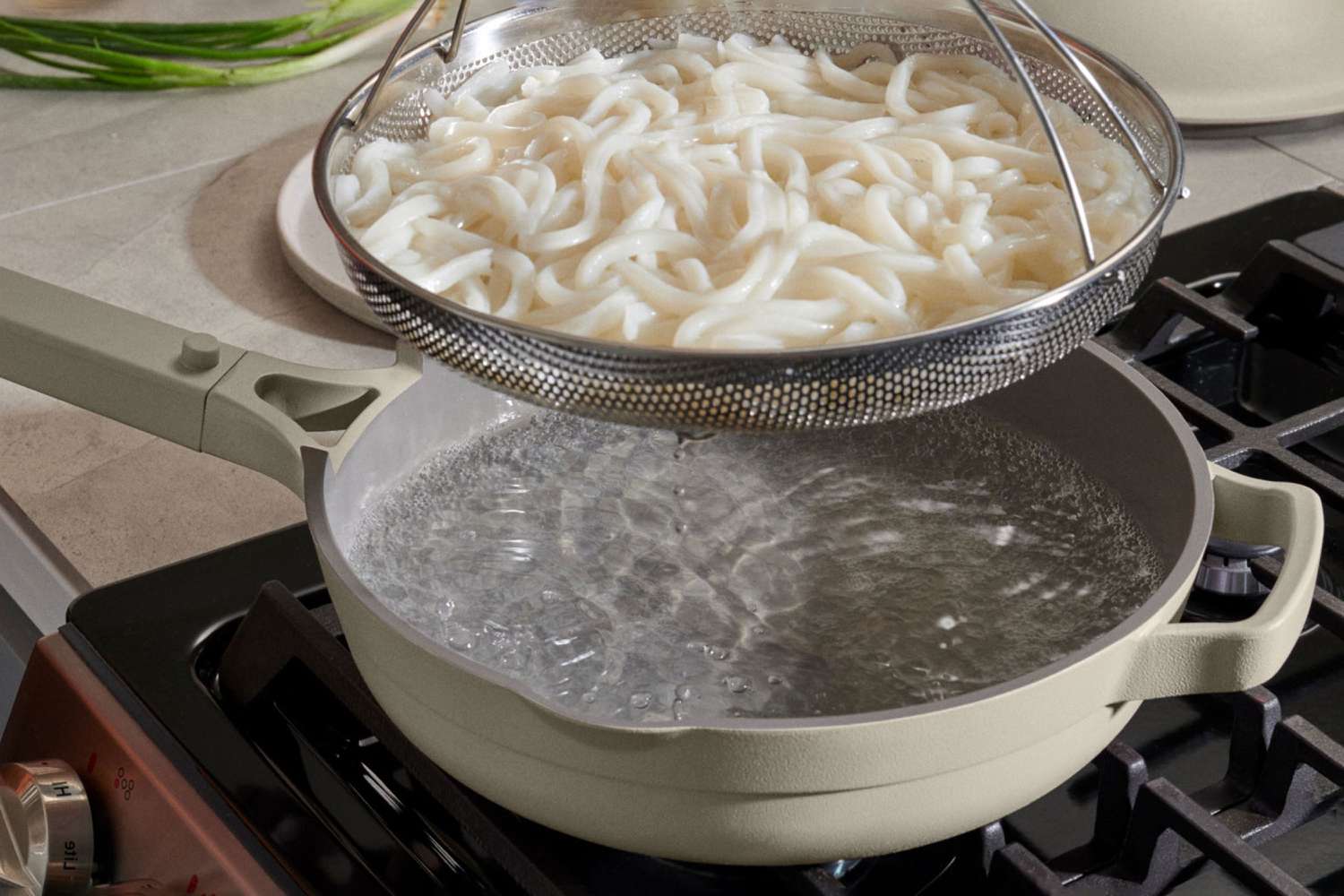

0 thoughts on “What To Cook In A Steamer”